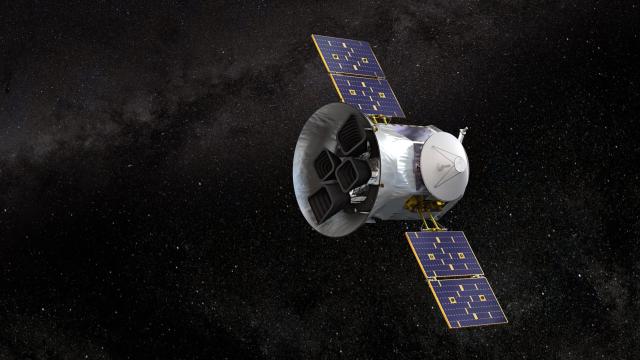Astronomers looking over data from the Transiting Exoplanet Survey Satellite (TESS) recently came across something weird: an object called TIC 400799224 has been fluctuating in brightness, like a star being routinely eclipsed. Their analysis of the observations suggests that TIC 400799224 is actually two stars, one of which is being orbited by a mystery object. The researchers suspect that a large asteroid or perhaps even a small planet is releasing dust clouds that dim the starlight from TESS’s perspective.
Launched in 2018, TESS is tasked with finding exoplanets — worlds beyond our solar system — that pass in front of their host stars, causing detectable dips in the star’s brightness. So far, TESS has discovered 172 exoplanets, and 4,703 candidate exoplanets await more analysis. These alien worlds help planetary scientists understand the demography of the universe and the diversity of planets that exist.

TIC 400799224 appears to be a stellar binary, or two stars orbiting one another. The stars are thought to be about 300 AU apart, according to the paper, with 1 AU being the average distance between Earth and the Sun. The research team is still not sure which star hosts the mystery object that causes the brightness dips. The dimming happens about every 19.77 days, but the length, intensity, and shape of the dips vary a lot.
The periodicity of the dimming is what leads the team to believe it’s caused by an orbiting object, though the dips don’t happen with every transit, so the team thinks the most likely culprit is a sporadically emitted dust cloud. Their research is published in The Astronomical Journal.
What makes TIC 400799224 particularly odd is that the suspected dust clouds are larger than researchers would expect, assuming that the clouds are due to the object’s disintegration over time. As a Centre for Astrophysics | Harvard & Smithsonian press release notes, slow disintegration is the cause of the dust clouds that come off Ceres, a dwarf planet in our solar system.
Other suspected disintegrating objects have also been found, so TIC 400799224 has some precedent. The researchers will continue to study the system and review historical records of TIC 400799224’s brightness, in hopes of better understanding what’s going on out there.
More: Very Large Telescope Images 42 of the Biggest Asteroids in Our Solar System
Editor’s Note: Release dates within this article are based in the U.S., but will be updated with local Australian dates as soon as we know more.
